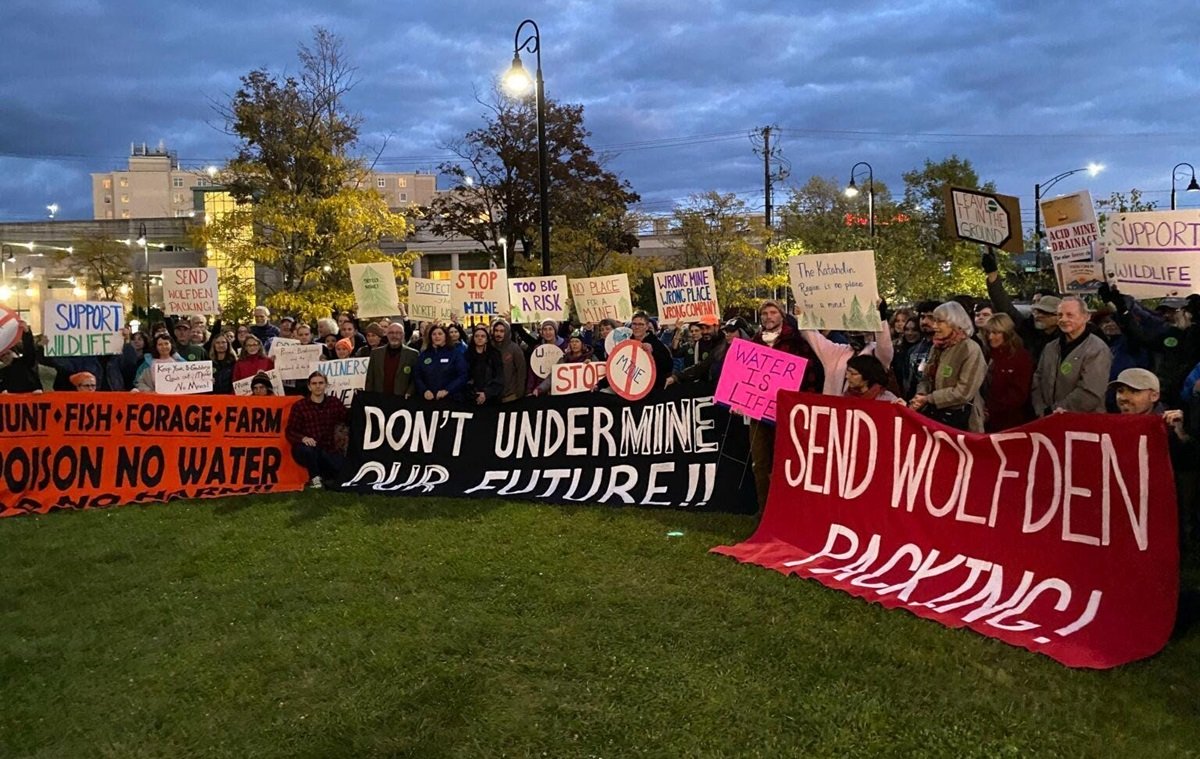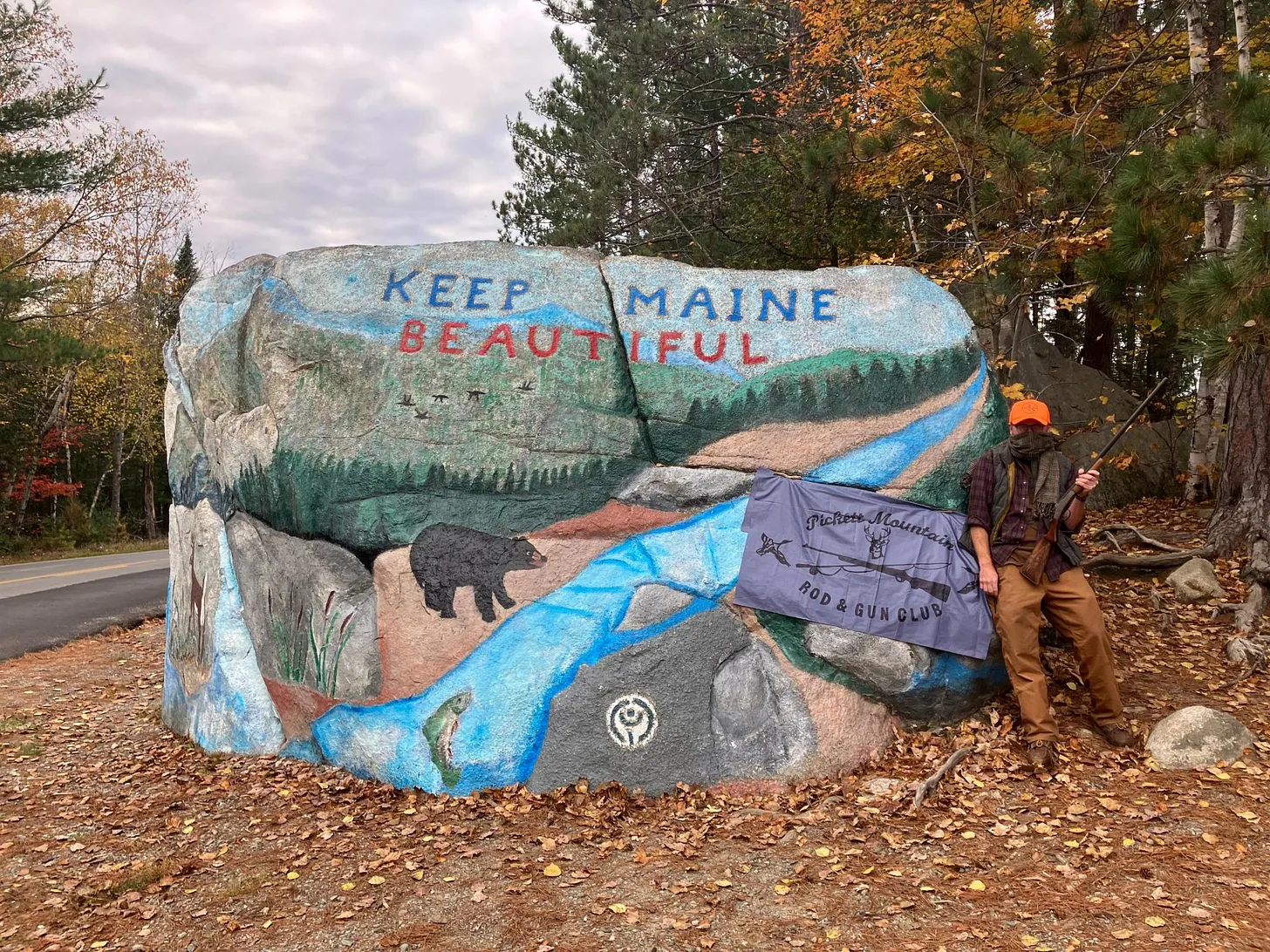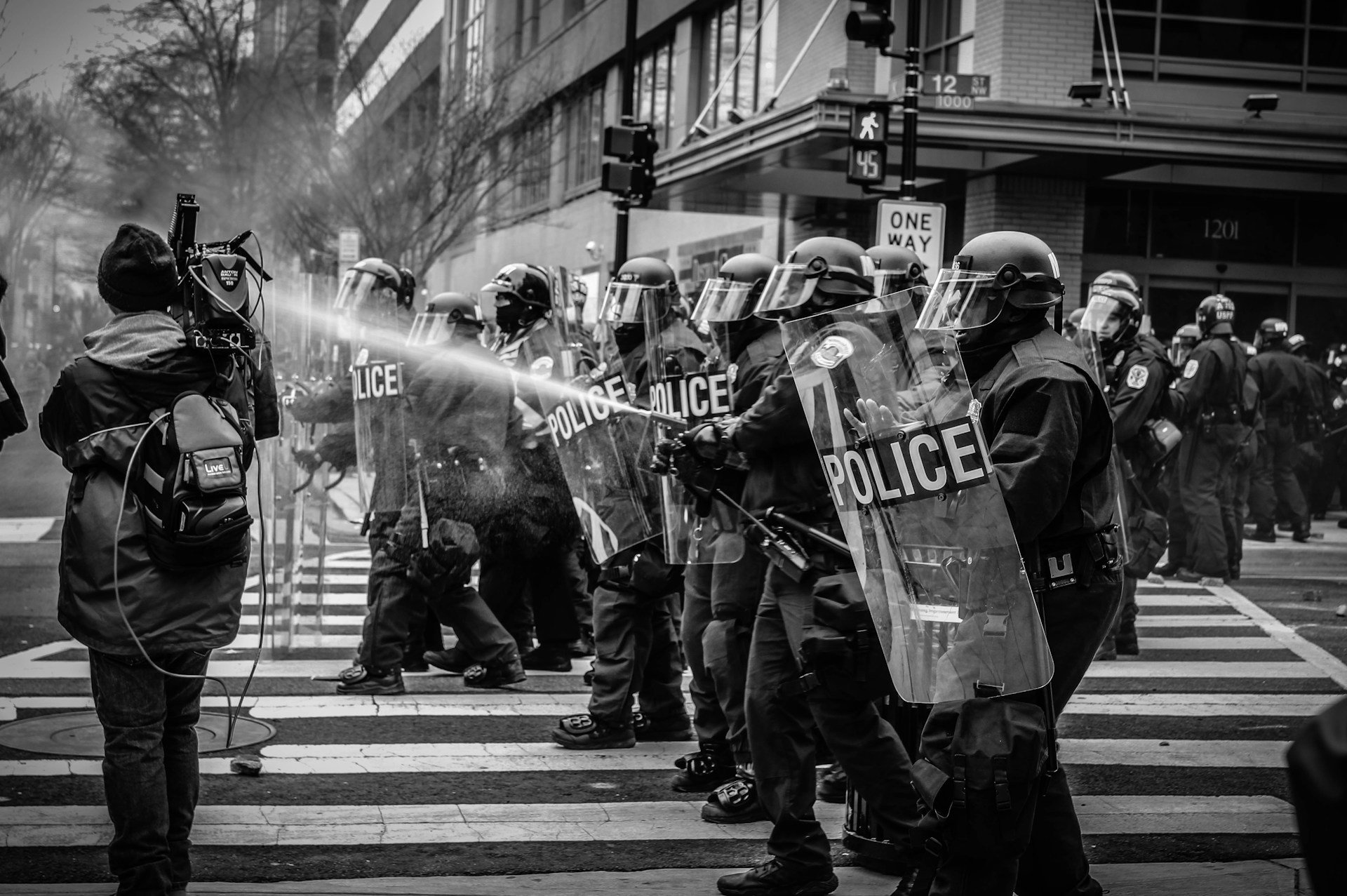Filed under: Development, Environment, Featured, Interviews, Northeast

Territories speaks with Emmet Grogan about ongoing struggles against polymetallic sulfide and lithium mining in Maine.
As people in the Caribbean Sea and on the Atlantic Ocean try to survive another hurricane season exacerbated by climate change, we’re reminded that we are already living through the catastrophe. Not content to let a good crisis go to waste, mining and energy companies are busy opening up new sites for extraction, using the “green transition” as cover to continue destroying the earth. Here at Territories we’ve been covering struggles against the green face of capital for the past few years, from Montreal to Argentina to France. In each case, people have fought with bravery and clarity against efforts to rend open the earth for new resources to exploit.
In this interview we talk to Emmet Grogan, a participant in the struggle against polymetallic sulfide and lithium mining in Maine. We ask about the proposed mining projects in Maine, a state full of untapped metal deposits that might be used in batteries, and the waste and pollution that these mines leave behind. We discuss the strategies that some are using to build a movement against extractive industries, and we hear about the creativity required to outwit the companies killing the planet.
It’s in these struggles that ethical relationships to each other and the places we live might take root. The world tilts and fragments. Whatever it takes, keep going.
Territories: To start off and to give us some context, can you tell us what the proposed mining operations in Maine are, and what risks are associated with these types of metal mining? Why have residents opposed these projects and how will expanded mining impact Maine’s land, air, and water?
Emmet: Well, after a 47 year hiatus with no metal mining in Maine, a change in regulations in 2017 again opened the door to mining in the state. Maine is “mineral rich,” with deposits of gold, copper, lead, zinc, silver, lithium and the “rare earth” minerals niobium and zirconium. So there are now several different types of metal mines being pursued in Maine—each in its own stage of development, and each with its own risks to the natural environment and its myriad inhabitants.
Wolfden Resources, a Canadian Junior Mining Company with backing from Altius Minerals and Kinross Gold, has recently attempted to develop two separate polymetallic sulfide mines in the state. Luckily, both projects have been defeated, at least for the time being. It may be obvious, but polymetallic sulfide mines are industrial operations designed to extract multiple metals (gold, silver, copper, zinc and lead in the two recently proposed projects) that are found within a sulfide-based ore buried deep beneath the surface of the earth. When sulfide ores are uncovered and exposed to air and water a chemical reaction begins which creates sulfuric acid. Toxic heavy metals trapped in the ore, including mercury and arsenic, are released in the process. This chemical reaction, known as acid mine drainage, tends to runaway, and once started is almost impossible to stop. Twenty-eight years after its closure, water at the Iron Mountain Mine in California was found to have a pH of negative 3.6! Sulfide mines from the Roman Empire are still leaching acid 2,000 years after their closure.
In addition to the groundwater contaminated through exposure to acid and heavy metals in the mining works, the proposed Pickett Mountain Mine near Mt. Katahdin would have contaminated more than 800,000 gallons per day in the process of concentrating the ores to marketable levels. This process—called flotation—relies upon adding a cocktail of toxic “reagents” to the slurry of finely ground ore and water. The Pickett Mountain Mine concentrator would have used more than 2,000 pounds of cyanide in this process everyday. And finally, the tailings, the waste left over once the marketable metals have been removed from the ore, are a continual source of water contamination and must be “managed in perpetuity.” This looks like huge geo-synthetic liners, basically heavy duty tarps, covering millions of tons of finely ground waste rock to prevent it from blowing away or getting wet. No trees can ever be allowed to grow on top of the “reclaimed” tailings piles because their roots can puncture the covers causing them to fail.
The other imminent mining threat in Maine is lithium mining. Because lithium is not generally contained in a sulfide ore, it has less potential to create acid mine drainage. The state has utilized this distinction to exempt lithium from the regulations governing metal mines, instead treating lithium mines like gravel or sand pits, yet no one can point to a lithium mine anywhere in the world that hasn’t contaminated vast amounts of water.
Territories: Extractive industries have relied on the displacement and genocide of indigenous peoples in order to make steady profits, and this is no different in Maine as mining operations are being proposed on land that either belongs to or is adjacent to tribes of the Wabanaki Confederacy. Can you tell us a bit about indigenous resistance to mining in Maine? Which tribes will be impacted and how?
The answer to this is complicated, and I am likely not the best person to report it. The proposed Wolfden mine in Pembroke, Maine was less than 10 miles from Sipayik—one of two reservations of the Passamaquoddy tribe. It should be noted that even without mining Sipayik has a long history of problems with their water supply. Often, water that comes out of taps on the reservation is contaminated and not potable. The site of the proposed Pickett Mountain mine is at the headwaters of the West Branch of the Mattawamkeag River, which itself is the headwaters of the Penobscot River. The Penobscot River is considered the lifeblood of the Penobscot Nation and was given formal citizenship status by the tribe in 2018. The Pickett Mountain mine site is also a documented site of indigenous stone tool production dating back over 10,000 years! It is about 15 miles from Trust Land of the Penobscot Nation on Grand Lake Matagamon, and 30 miles from the reservation of the Houlton Band of Maliseet Indians. This belies the fact that the entire state is traditional territory of the Wabanaki Confederacy to which the Passamaquoddy, Penobscot, and Maliseet belong.
The level of indigenous resistance is hard to gauge. The situation is complicated, as the tribes were federally recognized, but not recognized by the state of Maine until the Maine Indian Land Claims Settlement of 1980, which holds that tribes are not sovereign and are actually subject to state law. It also states that federal laws enacted after the date of the 1980 settlement for the benefit of ‘Indians’ do not apply in the state of Maine, unless specifically made applicable within Maine by Congress. This provision has excluded the tribes from more than 150 federal laws and has prevented the Passamaquoddy from addressing the water contamination at Sipayik. So basically, the Wabanaki are still fighting for their own sovereignty and full-recognition by the state. Some Wabanaki folks may have tactically held their tongue on the issue of mining, so as not to undermine their other legislative and judicial efforts. Others may not have heard much about mining because their focus was on other important struggles.
While there were individuals within the tribes that participated in informal organizing and public hearings against the Wolfden mine projects, much of the formal tribal involvement focused on intervening in Wolfden’s Re-zoning Petition for Pickett Mountain in front of the Land Use Planning Commission (LUPC). In a procedural miscarriage of justice, the Commission lumped together all of the intervenors opposed to the mine into one party. This meant that the tribal representatives testifying in the case had to follow the legal strategy adopted by the Natural Resource Council of Maine (NRCM) and Earthjustice. The tribal scientists were literally told by the white lawyers of white led NGOs what they could and could not say in their testimony.
More inspiring has been the work of the multiracial, but indigenous-led, Sunlight Media Collective which created several short films documenting both the mining threat and the beauty of the ecosystems that stand to be lost. And there are a few tribal members among the ranks of the Pickett Mountain Rod and Gun Club which formed to defend the territories that support the hunting, fishing, foraging, and traditional lifeways of the region.
Territories: Maine has some of the strictest mining regulations in the country, and it’s been this way since around the 1960s. This means that mining companies first need to reform environmental regulations before they can open mines in the state. How is this legislative battle playing out and what concessions are mining companies hoping to wring from the state? What led Maine to pass restrictions against mining in the first place?
I’m glad you bring this up, because I think it’s important to debunk the claim that Maine has “the strictest mining regulations in the country.” This declaration was first made in fundraising materials by the Natural Resource Council of Maine (NRCM) in 2017 after they compromised and co-drafted the new regulations behind closed doors in collaboration with mining industry lawyers.
In fact, the 2017 regulations were a relaxing of the rules that had acted as a de facto moratorium on mining since the closure of the Callahan mine in 1972 and the Kerramerican mine in 1977. Despite significant ongoing costs to taxpayers, both of those mines continue to leach contaminates into the environment nearly 50 years after their closure. While the regulations enacted in their wake required that all mine discharges meet the same quality standards as those for drinking water, the 2017 rules explicitly allow the contamination of groundwater—fully exempting heavy metal contamination, and acidification of groundwater within the mining area. The new regulations also eliminated the role of the Land Use Planning Commission in the permitting process, removed the need for Site Law, Solid Waste Management, and Stormwater permits, consolidating them all into one mining permit issued by the Department of Environmental Protection, and removed permit term limits making them valid for the life of the mine rather than requiring annual renewal. The re-permitting process was a critical safety measure, ensuring that potential mining projects would be regularly subjected to state review, allowing for identification and response to environmental and safety concerns. As Wolfden Resources’ CEO Ron Little stated about the so-called strictest regulations in the nation, “we see this as actually an even easier permitting process now that it’s been streamlined under the new mining code.”

In promoting the claim that Maine’s regulations are the toughest in the nation, the Natural Resource Council of Maine (NRCM) has actually done a great disservice to the struggle to prevent mining here. Predictably, the NRCM’s claim has been repeated ad nauseum by the mining companies, their lobbyists, and lackeys in government to promote mining in Maine because if it can meet the most stringent regulations in the country it must be green, right?
The new regulations did define a limited scope of mining activity that is permissible. Open pit metal mines greater than 3 acres are not permissible. Instead, mining must be done underground. The surface openings must be less than 3 acres, but underground can expand without bound. Tailings ponds are not permissible. Instead, tailings leftover from the concentration process must be “dewatered” and stored above ground in a process called Dry Stack Tailings Management. Neither of these limits prevents the contamination of ground or surface water.
Last legislative session, there were nearly a dozen bills related to mining being considered in the State House. This was largely in response to a threatened lawsuit against the state by Freeman Resources which owns the 3,000 acre lithium deposit in Newry, Maine. Freeman Resources argued that lithium is not a metal and that it shouldn’t be subject to even the modest 2017 mining regulations, and they convinced the Legislature of such. The new mining bill that eventually passed is LD 1363 “An Act to Support Extraction of Common Minerals by Amending the Maine Metallic Mineral Mining Act.” It exempts lithium and other “non-acid forming metals” from the Metallic Mineral Regulations and instead directs the DEP to regulate lithium mining as it regulates sand pits, gravel pits, and rock quarries—that is, very, very little. It should be noted that the NRCM lobbied in favor of this new bill, as it depends upon and promotes the myth of an industrial transition to “green renewable energy” predicated upon lithium ion batteries. Not surprisingly, it gets much of its funding from corporations operating in the renewable energy markets.
Territories: The discussion surrounding the mining of lithium and rare earth metals revolves around the climate emergency and the urgency of the transition to renewable energy. We are told that we have to choose between fossil fuel extraction or rare earth metal extraction, and that the latter does not negatively impact the environment. How does the proposed lithium mine fit into a larger reconfiguration of capital in an era of ecological crisis? Can you explain why this is a false dichotomy and why the green transition, including its intensification of resource extraction, is incompatible with living in a way that is in harmony with our surroundings?
I think you pretty much answered your question within the question. I don’t know if I can answer it much more clearly than to say “intensification of resource extraction” in the name of a “green transition” is a “false dichotomy” and “incompatible with living in a way that is in harmony with our surroundings”.
To quote Thea Riofrancos in Foreign Policy: “Mining, in historian Gabrielle Hecht’s vivid phrasing, is “inverting the planet”: It disrupts landscapes, ecosystems, and human communities while leaving behind enormous quantities of waste. To call such a process “sustainable” or “green” is to evacuate words of their meanings.”1
I can add a few statistics to flesh out what this “transition” looks like numerically. The International Energy Agency (IEA) estimates that building a wind power plant uses nine times more minerals than building a gas-fired power plant. Likewise, they estimate that manufacturing an electric vehicle (EV) requires six times more minerals than producing an internal combustion engine vehicle (ICEV). Just producing the battery for an average EV emits about 74% more carbon dioxide than producing an entire ICEV, says Munich-based automotive consultancy Berylls Strategy Advisors. According to Benchmark Mineral Intelligence lithium ion battery demand has grown from 100 gigawatt hours (GWh) of annual capacity in 2017 to 1000 GWhs in 2023. And according to Columbia University’s Center on Global Energy Policy, demand for lithium is set to grow tenfold further by 2050 under the IEA’s Net Zero Emissions by 2050 Scenario.2 Meanwhile, despite this exponential growth in lithium ion battery capacity and a dramatic rise in “renewable energy” production, global fossil fuel consumption continues to increase.
The UN’s Global Resources Outlook (2019) reports that extraction and primary processing of metals and other minerals is already responsible for 26% of global carbon emissions. This number is set to substantially increase as the “green transition” progresses. And just recently Current Biology reported that “Increased demand for metals and minerals needed for clean energy transition puts 4,000+ species at risk.”3
Certainly capital will stop at nothing to maintain its hegemony, and transitioning away from fossil fuels toward “renewables” is the means by which they purport to do this. Yet capital continues to extract massive profits from fossil fuels, while creating new profit streams from lithium, rare earth minerals, and even carbon sequestered in trees. Even if renewables were to actually replace fossil fuels it seems clear that one does not have “clean energy” if it comes at the cost of contaminated water, soil, and air—if it means consigning 4,000 species to history’s dustbin. This is not to defend a dependence upon fossil fuels, simply to challenge the dominant narrative surrounding the reconfiguration and the horizon with which we are presented. If the production of energy—”green” or otherwise—continues to be dictated by the motives of capital, the future looks bleak. But this is not inevitable. The discrepancies in per capita energy use between those in majority world countries and those in the richest are stark. To use the most extreme example, per capita energy use in Qatar is 895 times higher than per capita energy use in Somalia. And more close to home, per capita energy use in North America is 9 times higher than per capita energy use in Cuba. Any hope for living in harmony with our surroundings will rely upon a reduction of consumption in Qatar and other “developed countries,” not an increase in “green” industrial production.
As Cayte Bosler of the Columbia Climate School writes:
‘Sustainable’ mining is an oxymoron. There is no way to convert a living land base into products and protect its unique biodiversity and cultural value. There is no clean way to dig into the Earth, “backfill it,” and try to return the ecosystem to its natural state, which took hundreds of years to develop. If we actually want a chance for a livable planet, we must stop the poisoning before it happens, not tolerate the amount corporations are permitted to poison, or sacrifice what remains of the natural world for a ‘greater good’ — a faulty pretense.4
Territories: As companies continue to propose new mining operations in the state of Maine, grassroots movements have grown and begun to oppose these projects. How have you all engaged with the movement against mining in Maine? How have Mainers fought against the growth of metal mining over the past few years and what have you accomplished?
I wish I could say that there is a large grassroots movement opposing mining in Maine. There certainly are more people engaged with the issue now than there were when I became aware of the threat in 2020, but the landscape and composition is complicated. Maine is a huge state geographically, but with a relatively small human population. When I arrived on the scene there was serious fatigue among folks that had been engaged in resisting what became the 2017 mining regulations. That process of legislative rule-making went on for years, with people having to travel long distances to the Statehouse in Augusta to participate, and finding themselves in opposition to both the State, the mining interests, and the NRCM. This process concluded with the NRCM compromising with the State and the Mining Interests, while solidifying its own status as the loyal opposition, and burning out those most vested in preventing metal mining in Maine.
When I moved to Pembroke, near the Canadian border in rural Downeast Maine in 2020, I was hired to renovate a building that my boss had purchased at a tax sale. It was a huge building with 4 smaller outbuildings that had been owned by a mining company that folded and stopped paying taxes after the metal market tanked in 2008. The buildings were full of thousands and thousands of core samples—some in 3 foot cylindrical lengths, some crushed and finely ground, and much of it submerged in the flooded basement. When I called my friend in the Department of Environmental Protection’s water quality division to see how I should dispose of the massive amount of potentially toxic material, they told me they’d talk to someone within the agency with more knowledge about mining and get back to me. I was ultimately told that the material posed no risk, and that I could dispose of it however I wanted. This answer, and the ensuing pressure that I received from agents of Wolfden Resources and the Maine Geological Survey to turn the core samples over to them for “research” convinced me that I needed to do some serious research of my own.
Ultimately, I learned just how toxic polymetallic sulfide mining is, and uncovered Wolfden’s plans to develop a mine in town that they were calling the Big Silver project. Wolfden had been public about the project, but not about its location within the state. They had quietly bought up the mineral rights to at least 800 acres under the name Pembroke Timberlands, and had hired the same geologist, Dr. Breedlove, that had done the original research in Pembroke prior to 2008. We felt strongly that we must stop Big Silver in order to protect the region from environmental degradation, and to prevent the mining floodgates from opening statewide. We also knew that there was enormous pressure from the US Geological Survey (USGS) and Maine Geological Survey to develop metal mines in Maine, and that the Department of Environmental Protection had no expertise in mining, having only one staff member devoted to it—a “Mining Coordinator,” focused on facilitating and overseeing rock quarries, and gravel and sand pits.
Maine has a legal concept called “home rule,” whereby municipalities can enact stricter regulations than those in place statewide, so we felt like the best chance we had to stop the Big Silver project was to develop local opposition—pre-empting the dominant narrative that any resistance would be coming from liberal environmentalists down-state in Portland.
Pembroke sits on Cobscook Bay, a beautiful 100 square mile bay in the Atlantic Ocean surrounded by 7 small towns with a total population of about 7,000 people. It takes about an hour to drive from Eastport to Lubec, on the opposite ends of the bay, despite the fact that they are less than 2.5 miles apart by boat. Its economy is traditionally tied to the sea. The first sardine cannery in the USA was in Eastport, and scallops, mackerel, and lobster are all important exports from the region. Given that any contamination from a mine in Pembroke could affect the entire estuary, and that the human population of Pembroke is less than 800, it seemed important to draw from all of the surrounding communities to resist the proposed project.
Inspired by the Friends of Lamoine who had successfully resisted the expansion of a gravel pit in their community, the Friends of Cobscook Bay (FOCB) formed in early 2021. FOCB wanted to transcend political orientation and subcultural affiliations and avoid being pigeonholed as environmentalists from away—a label that has broadly negative connotations in the conservative, economically-depressed region. While the mining interests were promising good jobs, FOCB wanted to shift the narrative and push to protect the livelihoods we already had—to protect the clean water, the fisheries, and the lives and cultures and traditions that depend upon them. FOCB tried to be as pro-fisherman as they were anti-mine. They canvassed door-to-door, tabled at town events like the local fair and 4th of July Celebration, developed a website, and hit the local papers with letters to the editor to raise awareness about the threat.
Folks simultaneously began work on a project that was statewide in scope. In addition to the very “vanilla” local Friends of Cobscook Bay website, ResistMaineMining.org came online to provide a more radical analysis than the NRCM’s tepid “wrong company” and “wrong location” position. Luckily, the property owner at the center of the proposed Big Silver project reached out through the Resist Maine Mining website. He was active duty military in Texas, and unbeknownst to him his deceased grandfather had sold the mineral rights to their land in the 1960s. Wolfden had treated him disrespectfully, telling him that they were going to build a road on his land and that they were only notifying him out of courtesy. He was pissed and was integral to shifting the conversation at the American Legion in Pembroke, where much of the politics in town are actually done.
This property owner also agreed to be part of a panel for the community forum that was organized at Town Hall, along with the Select Board, the town’s lawyer, and Wolfden’s Vice President Jeremy Ouellette. That meeting was epic. Electric atmosphere. Standing room only. Local redneck hecklers messing with everybody. Eloquent tribal members. There was no order or decorum. It was wild. Despite strong support for mining from the town’s Select Board and dire warnings about the consequences of enacting a ban from the town’s lawyer, later that spring the people of Pembroke voted 129-48 in favor of a ban on Industrial Mining.
Wolfden’s other prospect in Maine, their flagship Pickett Mountain Project, is in the very rural north central part of the state—the Maine Highlands. Wolfden bought more than 7,000 acres of land there in 2017 when the new regulations allowing groundwater pollution from mining were passed. Because the land is in an unincorporated part of the state there is no municipal government to regulate zoning or to pass/enforce an ordinance banning mining as there was in Pembroke. The zoning for unincorporated territories of Maine is governed by the statewide Land Use Planning Commission (LUPC). Luckily, the land that Wolfden purchased was not zoned to allow mining, so for Wolfden to develop their project, they needed to apply to the LUPC for a zoning change.
The NRCM had almost no ground game in the area, and Wolfden spread money around to influential local business owners. They had the ATV Club President, which is a really big deal up there, two of the nearby Hunting Lodges, the local trucking company, the statewide logging company and the local brewery all in its pocket. They formed a Citizens Advisory Committee of all these right-wing business owners to promote the mining project. They flipped the Friends of Cobscook Bay’s script and had municipal ordinances, drafted on Wolfden company letterhead, passed in the nearby towns supporting their project and the jobs it would supposedly bring. Three out of the four surrounding towns passed their ordinance. The fourth failed to pass it by only a few votes. That’s when folks really started hustling and building relationships with the area and its people. The Friends of Pickett Mountain Pond formed in the spirit of the Friends of Cobscook Bay—once again attempting to get ahead of the “crazy environmentalists from far away” narrative. From this front we were able to push out information and develop a small local network.
Shortly after Tortuguita was murdered by police in the Weelaunee Forest in Atlanta, and folks were getting arrested for camping and wearing camo in the woods there, people in the Maine Highlands were forming the Pickett Mountain Rod and Gun Club to establish a pro-active presence on the site of the proposed mine. “Yeah we’re camping, and yeah we’re wearing camo, and guess what? We have guns, too!” Blaze orange hats were printed for folks to wear at the public hearings, traditional subsistence based life-ways were promoted, and connections were built across cultures. Now fly fishing outfitters and hunting camps became legitimate places to canvass, offer swag, cultivate relationships, and build resistance. Wolfden’s ability to easily classify, characterize, and predict their opposition was monkeywrenched. No longer could the struggle be portrayed as left vs. right, city vs. rural, or academic vs. redneck. Now opposition came from places that they hadn’t expected including traditionally conservative spaces like gun clubs and guide associations.
We tabled at the Common Ground Fair, organized by the Maine Organic Farmers and Growers Association (MOFGA) and got folks to send postcards to the LUPC urging them to deny the rezoning. And we wrote our own letters to the LUPC. We organized to get people to demonstrate outside of and participate in the Public Hearings, and we painted big banners to set the narrative and usurp the NRCM’s weak messaging. And ultimately, we won the battle. The LUPC, under immense pressure from both sides, denied Wolfden’s rezoning appilication in February 2024. There is still a lot of room to grow the Gun Club, but the urgency has dissipated. I would love to see the annual camp outs continue, and can’t shake the vision of members of the Friends of Pickett Mountain Pond ice skating while the Gun Club hosts an ice-fishing derby on the pond. How much harder it is to let something be destroyed when one has engaged with it intimately?
Since the LUPC denied Wolfden’s re-zoning, the NRCM has actually lobbied to loosen the mining regulations to facilitate lithium extraction, and its true colors have been exposed. While they try to retain hegemony as the opposition to metal mining in the state, there is no real active, organized statewide organization that is dedicated to preventing metal mining. There are however small pockets of very engaged grassroots resistance, particularly in the Midcoast region where specific threats have materialized. These are largely focused on a piecemeal approach of passing Municipal Ordinances that prevent industrial mining activities. CARMA (Citizens Against Residential Mining Activities) is the best example of this. They have been successful in advocating for and passing ordinances and moratoriums in the towns of Hope, Union, and Warren where a company called Exiro has been hoping to develop a sulfide mine. Other towns in Western Maine are also considering anti-mining ordinances despite the fact that there are no imminent threats within their borders as a protective measure of their aquifers and unspoiled groundwater.
As far as what we accomplished? Well, we raised awareness statewide about the larger issues of metal mining. We created a template and precedent for successful municipal ordinances. We stopped two billion dollar projects. We scrambled the narrative and broke up the binary—bringing fisherman and hunters into the anti-mining milieu, and hopefully we did a little to expose the NRCM as the ivory tower liberal green-washing capitalist loyal opposition that they are.
There is still much to do, and our victories in battle by no means ensure a victory in the war. The fight against lithium mining will be a serious challenge for years to come.
Notes:
- https://foreignpolicy.com/2022/02/07/renewable-energy-transition-critical-minerals-mining-onshoring-lithium-evs-climate-justice/
- https://www.energypolicy.columbia.edu/publications/fact-sheet-lithium-supply-in-the-energy-transition/
- https://phys.org/news/2024-07-demand-metals-minerals-energy-transition.html
- https://news.climate.columbia.edu/2021/06/09/stop-calling-green-energy-clean/





